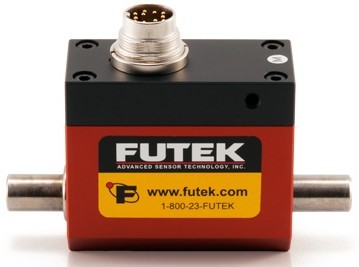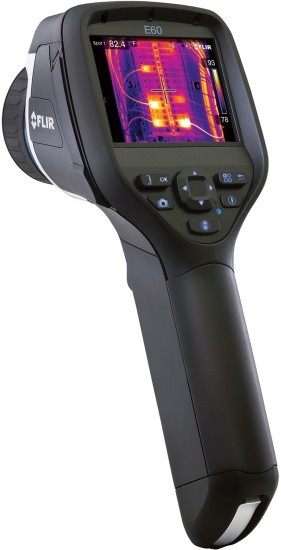We use quite an assortment of equipment in our motor labs. The right tools for the job make all the difference! Let’s dig in.
1. Laser tachometer
This device shines a laser and measures the frequency of reflective pulses. The rotor being tested needs to have a small area of reflective material, which can be a simple adhesive strip.
2. Stroboscope
This handy light gun provides a simple way to observe RPM without modifying a system. You turn a knob to vary the flashing frequency until the motor’s rotor appears to slow to a stop, and the gun displays the corresponding RPM.
3. Magnetic brake
Two wires lead to an internal coil, and the more voltage and current you apply, the more torque load appears on the shaft. Brakes are useful for testing motors at different loads.
4. Coupler
This specialized clamp interfaces a motor under test to a rotary load. Getting the correct bore diameter on each end is key.
5. Torque sensor
An obvious companion to the brake and coupler is a sensor to measure the torque present. While brakes often specify their torque load versus current, they tend to lack accuracy.
6. Dynamometer
Dynos are especially used for measuring the power that your motor outputs, and creating RPM versus torque/power curves.
7. Flutter meter
Some applications use the flutter meter as the gold standard for measuring rotational speed jitter. The signal analyzed is typically a clock that’s generated from the rotating motor. The flutter output is the percentage of jitter (RMS or peak), and is almost always displayed on a vintage analog needle.
8. Frequency to voltage converter
The clock that’s generated from a rotating motor can also be converted to an analog voltage that represents frequency (RPM). Connected to an oscilloscope, you can then see motor speed over time. Some flutter meters have this conversion integrated.
9. Thermal camera
Systems that drive amps are bound to get warm. The hottest components are usually the power FETs and sense resistor, but this camera might reveal another component you didn’t realize was so hot.
10. Anechoic chamber
Electric motors create different acoustics based on current characteristics. For instance, driving a BLDC with current that varies like a sine wave can be whisper quiet compared to a buzzing trapezoidally-driven one. A decent anechoic chamber with a microphone and FFT post-processing will tell you the full story.
11. SMD rework station
When replacing components, whether they have leads, no leads, or a bottom-side thermal pad, an SMD station makes things far easier than a lowly soldering iron. Match solder paste with a heat gun, microscope and sharp tweezers and you’ll be working like a pro.
12. Current and differential probes
Current probes are a vital tool in motor drive debug. By clamping around motor wires and connecting up to a scope, you can observe phase current. Likewise, high-voltage differential probes can be a necessity for measuring power FET VGS and VDS, as they ignore any transient ground bounce.
13. LCR meter
Motor windings can have significant inductance, but most multimeters can’t directly measure it. The LCR meter does, by applying test pulses and measuring frequency response.
14. Function generator
As many motor ICs are controlled by PWM or clock frequency, having a function generator is a must.
15. Power resistor
Resistors like this are one way to test maximum power output, as they can dissipate 100W and be connected in parallel for even more.
Do you use an interesting gadget not mentioned here? If so I’d like to hear about it!














